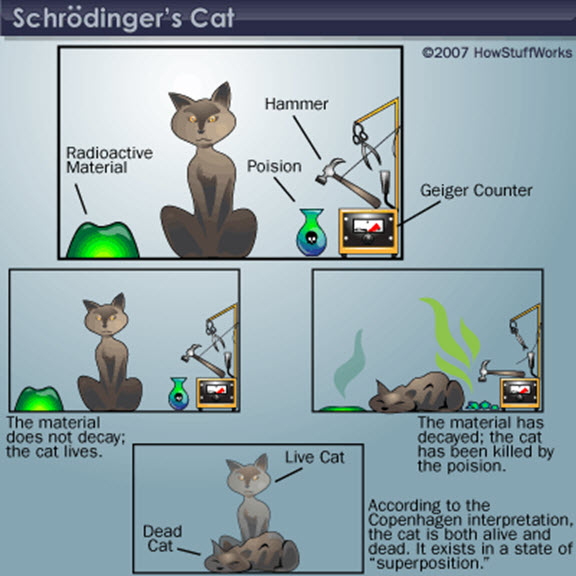

Schrodinger's Cat Paradox: Is the cat alive or dead?
Schrodinger's Cat is a thought experiment proposed by physicist Erwin Schrodinger in 1935. It was designed to illustrate the concept of superposition in quantum mechanics and the counterintuitive nature of quantum theory when applied to macroscopic objects.
In this thought experiment, a cat is placed inside a sealed box along with a radioactive substance, a Geiger counter, and a vial of poison. The radioactive substance has a 50% chance of decaying within a specific time frame, which triggers the Geiger counter to release the poison, ultimately leading to the death of the cat.
According to quantum mechanics, until the box is opened and observed, the cat exists in a superposition of states, meaning it is simultaneously both alive and dead. This concept arises from the principle of wave-particle duality, which suggests that particles can exist in multiple states until observed or measured.
However, once the box is opened and observed, the superposition collapses into a definite state. At that moment, the cat is either found to be alive or dead. This is known as the "collapse of the wavefunction" or the "measurement problem" in quantum mechanics. The act of observation or measurement forces the system to choose one of the possible states.
It is important to note that Schrodinger's Cat is a theoretical concept and not a real-life scenario. It was proposed to highlight the peculiarities of quantum mechanics and the challenges it poses in understanding the behavior of particles at the macroscopic level.
In reality, macroscopic objects like cats do not exist in superposition states. Quantum effects become negligible at larger scales, and classical physics principles dominate. The thought experiment serves as a metaphorical tool to grasp the concept of superposition and the role of observation in quantum mechanics.
While Schrodinger's Cat paradox does not have a practical application or real-world implications, it has sparked numerous debates and discussions about the interpretation of quantum mechanics. Different interpretations, such as the Copenhagen interpretation, the Many-Worlds interpretation, and the Decoherence interpretation, offer various explanations for the paradox.
It is worth noting that the concept of Schrodinger's Cat is often misunderstood or misinterpreted. It is not meant to suggest that a cat can exist in a superposition of alive and dead states in reality, but rather to illustrate the counterintuitive nature of quantum mechanics when applied to macroscopic objects.
In conclusion, Schrodinger's Cat paradox serves as a thought experiment to highlight the concept of superposition and the role of observation in quantum mechanics. The cat is neither definitively alive nor dead until observed, representing the uncertainty and probabilistic nature of quantum systems. However, in the macroscopic world, such superposition states are not observed.
Related Posts
© 2025 Invastor. All Rights Reserved

User Comments